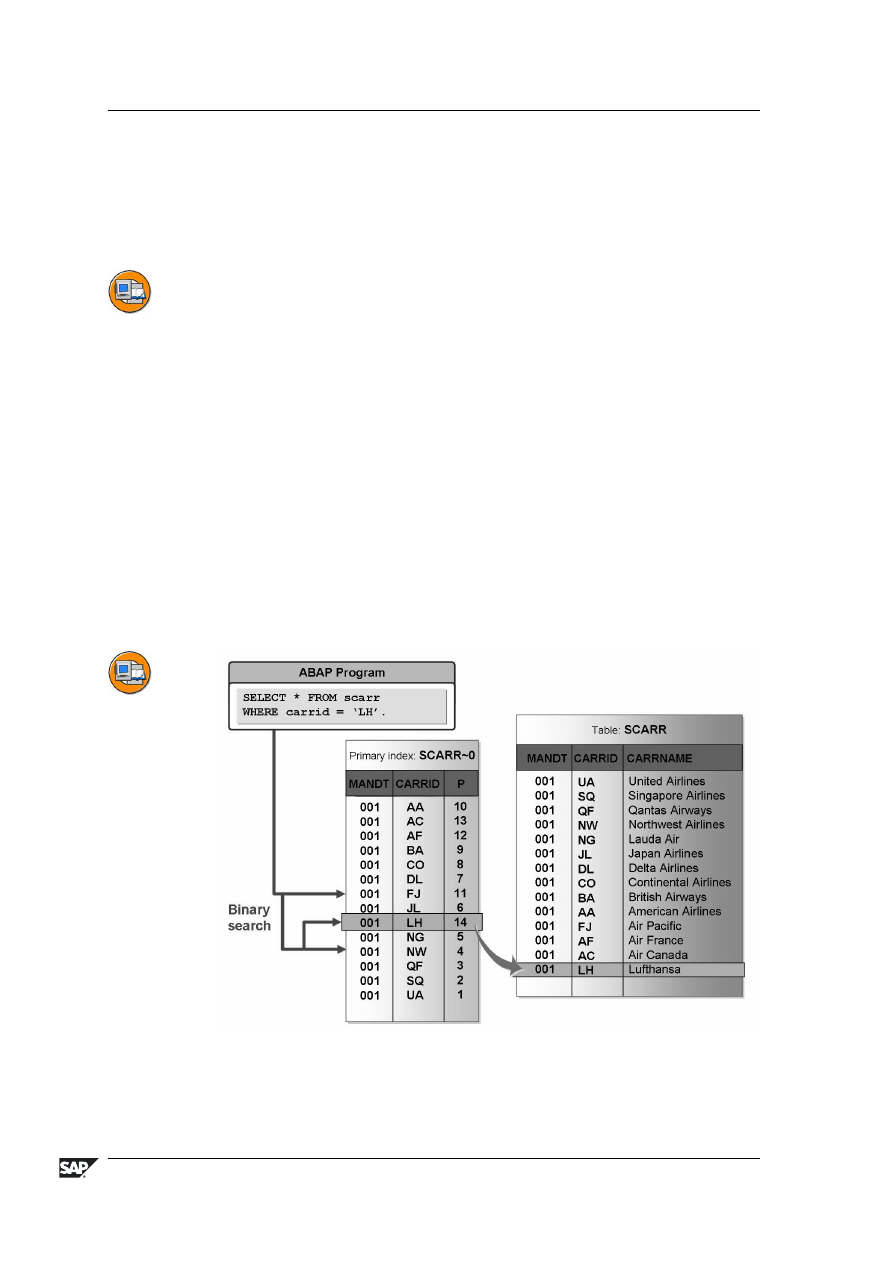ВУЗ: Не указан
Категория: Не указан
Дисциплина: Не указана
Добавлен: 03.04.2021
Просмотров: 2370
Скачиваний: 41
BC430
Unit Summary
Unit Summary
You should now be able to:
•
Create domains and use them in data elements
•
Define data elements and use them as the basis for defining data objects
in ABAP programs
•
Define structures and use them as the basis for defining data objects in
ABAP programs
•
Define internal tables and use them as the basis for defining data objects
in ABAP programs
•
Define complex (nested / deep) structures and use them as the basis for
defining data objects in ABAP programs
•
Define global constants with the help of a type pool and use them in ABAP
programs
•
Create Tables
•
Use the two-level domain concept
•
Define the technical settings of a table
•
Create and use include structures
•
Describe table types in the SAP system apart from the transparent tables
•
Distinguish pooled and cluster tables from one another
•
Describe the advantages and disadvantages of pooled and cluster tables.
2006/Q2
© 2007 SAP AG. All rights reserved.
73
Unit Summary
BC430
74
© 2007 SAP AG. All rights reserved.
2006/Q2
Unit 3
Performance During Table Access
Unit Overview
In this chapter, you will get to know the basic aspects of the efficient table access.
Unit Objectives
After completing this unit, you will be able to:
•
Judge when table accesses can be speeded up by using indexes
•
Create indexes in the ABAP Dictionary
•
Explain the different buffering types
•
Judge when it makes sense to buffer a table and which buffering type you
should choose
•
Buffer a table using the technical settings
Unit Contents
Lesson: Performance During Table Access .................................. 76
Exercise 6: Performance Aspects with Table Access .................. 91
2006/Q2
© 2007 SAP AG. All rights reserved.
75

Unit 3: Performance During Table Access
BC430
Lesson: Performance During Table Access
Lesson Overview
Lesson Objectives
After completing this lesson, you will be able to:
•
Judge when table accesses can be speeded up by using indexes
•
Create indexes in the ABAP Dictionary
•
Explain the different buffering types
•
Judge when it makes sense to buffer a table and which buffering type you
should choose
•
Buffer a table using the technical settings
Business Example
Some transactions contain select statements in their applications, which cause
very long runtimes. You should now improve the performance without changing
the program.
Improved Performance through Access per Index
Figure 30: Structure of an Index
76
© 2007 SAP AG. All rights reserved.
2006/Q2
BC430
Lesson: Performance During Table Access
An index can be used to speed up the selection of data records from a table.
An index can be considered to be a copy of a database table reduced to certain
fields. The data is stored in sorted form in this copy. This sorting permits fast
access to the records of the table (for example using a binary search). Not all
of the fields of the table are contained in the index. The index also contains a
pointer from the index entry to the corresponding table entry to permit all the
field contents to be read.
•
When creating indexes, please note:
–
An index can only be used up to the last specified field in the selection!
The fields that are specified in the WHERE clause for a large number
of selections should be in the first position.
–
Only those fields whose values significantly restrict the amount of
data are meaningful in an index.
–
When you change a data record of a table, you must adjust the index
sorting. Tables whose contents are frequently changed should not have
too many indexes.
–
Make sure that the indexes on a table are as disjunct as possible.
Figure 31: Access with Indexes
The database optimizer decides which index on the table should be used by the
database to access data records.
2006/Q2
© 2007 SAP AG. All rights reserved.
77